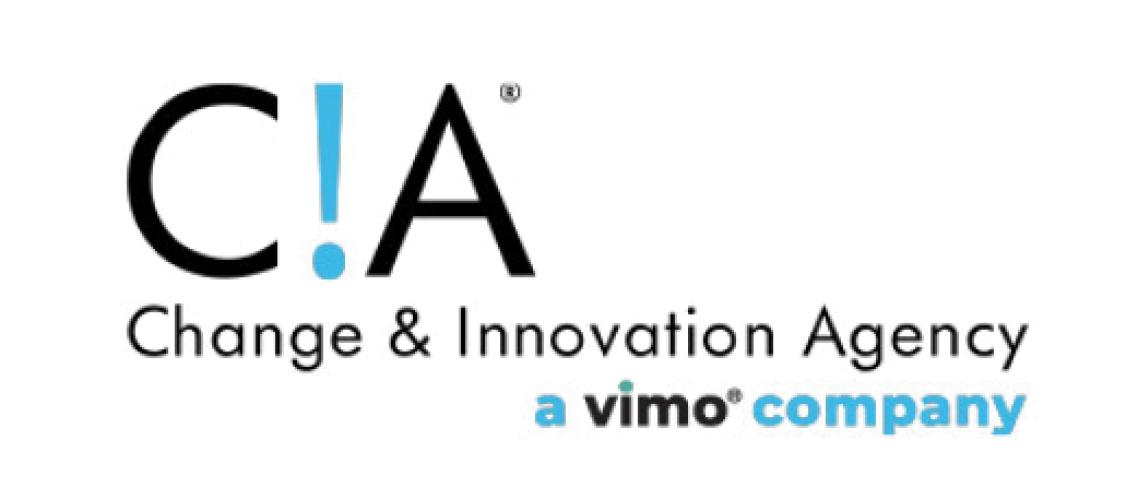NASWA Bulletin - March 6, 2015
In This Issue:
- WIOA Implementation: States Sharing Best Practices
- Economy Added 295,000 Jobs in February; Unemployment rate at 5.5 %
- Court Ruling Stops USDOL Accepting/Processing H-2B Determinations
- Unemployment Fell In Every State in 2014 – First Time in 30 Years
- Congress Questions Administration's Tuition Free Plan for Community Colleges
- Budget Resolutions on Track after Recess
- Senate Committee Approves Measure To Provide Upfront Leave to Wounded Vets
- State Workforce Agencies -- Organizational Structure
- The National Labor Exchange (US.jobs) Increasing Number of Distinct and Currently Available Jobs
- Notices, Advisories, and Reports
WIOA Implementation: States Sharing Best Practices
To help states begin their implementation of the Workforce Innovation and Opportunity Act (WIOA), NASWA is collecting and sharing resources developed by states, partners, and other stakeholders. To begin this process, NASWA has provided two state initiatives below. They include: (1) An Arizona initiative to create a statewide WIOA implementation plan and (2) Action steps from the Michigan Workforce Department on initiatives their local partners can implement immediately. NASWA will continue to share best practices and resources through a dedicated area on the NASWA website. If your state has WIOA implementation resources that might be useful as practices or templates for other states please share them with your peers through NASWA. Please direct your resources to: ychocolaad@naswa.org.
Arizona Approach: Statewide WIOA Team
Arizona Model: At NASWA’s Winter Policy Forum February 19-20, Jim Apperson and Joel Millman of the Arizona Department of Economic Security, described an initiative to establish a statewide WIOA Team with their new partners and ensure the state would be ready when guidance is released from the U.S. Department of Labor. Their power point can be found here; Arizona’s Statewide Implementation plan can found here and their WIOA Resource Web Page can be found here.
Michigan Model: Actions Locals Can Take Now
- Christine Quinn, Director, Michigan Workforce Development Agency, sent a Memorandum to her local partners on transition and implementation steps that local areas can act upon immediately.
- Please click here for her memo covering Titles I, II and III of WIOA. Ms. Quinn’s topic areas are listed in the PDF version, but please refer to her memo for additional information.
- The memo also reminds locals that TEGL 12-14 encourages them to work with their states on transitional funding to move forward from WIA to WIOA. The guidance allows for the use of up to two percent (shared between the state and the local area) of the state’s Program Year 2014 Workforce Investment Act (WIA) allocations to support transition costs.
Economy Added 295,000 Jobs in February; Unemployment rate at 5.5 %
The Bureau of Labor Statistics released The Employment Situation for February, 2015 today, showing U.S. nonfarm payrolls grew by a seasonally adjusted 295,000 jobs in February and job creation in prior months was slightly weaker than previously estimated, with revisions showing a net decline of 18,000 jobs for December and January.
The unemployment rate, calculated from a separate survey of households, fell to 5.5% in February, from January’s 5.7%. The drop shows employers are hiring steadily, but some of the decline can be attributed to more Americans dropping out of the labor force last month.
Slow Wage Growth: Despite steady job creation and the unemployment rate well down from a year earlier, the growth in wages has remained slow. In February, wages rose just 0.1 percent compared to an increase of 0.5 percent in January. Average hourly wages for private-sector workers have been rising slowly, at around 2 percent, for the last few years. Average hourly earnings among private-sector workers rose 3 cents last month to $24.78.
Labor Participation Rate: Millions of Americans also remain out of the labor force. The labor-force participation rate fell to 62.8% in February from 62.9% in January. The figure is near the lowest level since the late 1970s.
Return to TopCourt Ruling Stops USDOL Accepting/Processing H-2B Determinations
On March 4, 2015, the federal district court in the Northern District of Florida vacated the U.S. Department of Labor‘s (USDOL) 2008 H-2B regulations on the ground that USDOL lacks authority under the Immigration and Nationality Act to issue regulations in the H-2B program. (Perez v. Perez, No. 3:14-cv-682 (N.D. Florida, Mar. 4, 2015).
Because of this decision, effective immediately, USDOL will no longer accept or process requests for prevailing wage determinations or applications for labor certification in the H-2B program. “DOL is considering its options in light of the court‘s decision, according to a March 4, 2015 statement on the USDOL website – Office of Foreign Labor Certification.”
The court decision on H-2B visas, or temporary visas to seasonal non-agricultural workers, leaves the program in regulatory limbo. While the Department of Homeland Security is charged with deciding whether to grant or deny applications for H-2B visas, an employer must first receive a temporary labor certification from the Labor Secretary.
In 2008 and 2012, USDOL issued regulations governing this process. Employers prefer the less stringent 2008 regulations, while worker advocates prefer the 2012 regulations, which they say adds a host of new worker protections.
The 2012 regulations, however, were never implemented after a federal judge ruled USDOL was never given expressed rulemaking authority under the 1986 Immigration Reform and Control Act in a lawsuit from employers. In Perez versus Perez, the most recent case, worker advocates argued that if USDOL did not have the authority to implement the 2012 regulations, then it did not have the authority to implement the 2008 regulations either.
In his ruling, Judge M. Casey Rodgers of the U.S. District Court for the Northern District of Florida noted the USDOL claimed the same statutory authority for the 2008 regulations as for the 2012 regulations. But, noted that neither the Immigration and Nationality Act nor the Wagner-Peyser Act conferred rulemaking authority on the DOL. The court found that an injunction is warranted in this case because the plaintiff, a U.S. citizen, provided sufficient evidence that he was being harmed by the 2008 regulations because their reduced recruitment requirements make it easier for employers to hire H-2B workers instead of citizens.
Return to TopUnemployment Fell In Every State in 2014 – First Time in 30 Years
p>The Bureau of Labor Statistics reported this week, the annual average unemployment rates decreased from 2013 to 2014 in all 50 states and the District of Columbia. This was the first year since 1984 in which all states and the District had over-the-year rate declines. The largest rate decline occurred in Illinois (-2.0 percentage points), followed by Colorado, North Carolina, and Ohio (-1.8 points each). Twenty additional states had over-the-year jobless rate decreases of at least 1.0 percentage points.North Dakota had the lowest annual average unemployment rate (2.8 percent) in 2014. Nebraska (3.3 percent) and South Dakota (3.4 percent) had the next lowest jobless rates. Eleven additional states had annual average unemployment rates under 5.0 percent. Mississippi and Nevada had the highest jobless rates (7.8 percent each) among the states, followed by Rhode Island (7.7 percent). The District of Columbia also had a jobless rate of 7.8 percent.
Return to TopCongress Questions Administration's Tuition Free Plan for Community Colleges
Rep. Tom Cole, (R-OK), the chairman of the House Appropriations Labor-HHS-Education Subcommittee, expressed concern to Education Secretary Arne Duncan Wednesday on the Administration’s proposal to make community colleges tuition free. Rep. Cole's comments, made during a hearing before the House Appropriations Subcommittee on Labor-HHS-Education, to hear the Education Secretary present the 2016 budget request for his department, is the latest concern expressed by House appropriators on the Administration’s community college proposal.
Chairman Cole noted that community colleges generally already have low tuition rates and students often get Pell Grants to cover most of that cost. “I’m a little mystified why that is the focus of so much resources, as opposed to bringing down the longer-term cost of a more extensive education,” he said.
Secretary Duncan said the free tuition guarantee was essential for low-income students who may not have even the few hundred dollars they would otherwise need to cover tuition. It’s also important psychologically for students to know there is a guarantee of funding when they otherwise thought higher education was out of reach, he added.
The Administration, in its Fiscal Year 2016 budget submission, included a proposal to make the first two years of community college free for students. Called the “America’s College Promise” proposal, the plan promises to cover tuition for qualifying community college programs for students who maintain a GPA of 2.5. The White House says the plan is expected to cost $80 billion over the next 10 years.
Return to TopBudget Resolutions on Track after Recess
The House and Senate Budget Committees are moving ahead with plans to mark up their fiscal 2016 budget resolutions the week of March 16, after the House returns from its recess. If the House committee follows past practice, the markup will occur Wednesday, March 18. The budget resolution serves as a blueprint for the actual appropriation process, and provides Congress with some control over the appropriations process. No new spending authority, however, is provided until appropriation bills are enacted. A budget resolution binds Congress, but is not a law.
Return to TopSenate Committee Approves Measure To Provide Upfront Leave to Wounded Vets
First-year federal employees who are military veterans with significant service-related disabilities would receive 104 hours of upfront sick leave from their employing agencies under legislation (S. 242) approved by voice vote March 4 by the Senate Homeland Security and Governmental Affairs Committee. The Wounded Warriors Federal Leave Act, introduced January 22 by Sen. Jon Tester (D-MT), would provide the paid sick leave to military veterans with service-connected disabilities rated at 30 percent or more by the Department of Veterans Affairs so they can receive medical attention during their first year of civilian federal employment without taking unpaid leave. Under the bill, employees would be required to submit eligibility certifications to their employing agencies as prescribed by the Office of Personnel Management or, for employees of the U.S. Postal Service, the postmaster general. Unused upfront leave provided to eligible veterans under the measure wouldn't carry over into their second year of federal employment, because by that time they would be expected to use the sick leave they accrued during their first year of employment.
Return to TopState Workforce Agencies -- Organizational Structure
Have you ever wondered which programs are handled by which State Workforce Agency? A recent NASWA survey shows how State Workforce Agencies and partner programs are organized for each state and Washington, D.C. The map below shows that workforce agencies in 23 states handle WIA/WIOA, Unemployment Insurance, Wagner-Peyser, Trade Adjustment Assistance, Labor Market Information and VETS. A primary goal of the survey is to show which states share similar programs within their state workforce agency to better collaborate when implementing WIOA or other programs. A detailed matrix providing state-by-state programs can be accessed here.
NASWA also created two other maps (PDF version) showing the integration of Workers’ Compensation with both Unemployment Insurance and WIOA programs within State Workforce Agencies:
- State Workforce Agencies with WIA/WIOA Programs and Workers’ Compensation
Some 16 State Workforce Agencies currently have responsibility for both WIOA programs and Workers’ Compensation. Those states include Alaska, Colorado, Delaware, Hawaii, Iowa, Louisiana, Massachusetts, Montana, New Jersey, Pennsylvania, Rhode Island, South Dakota, Tennessee, Vermont, Wisconsin, and Wyoming. Results are illustrated in the graphic in the PDF version.
- State Workforce Agencies with Unemployment Insurance and Workers’ Compensation
Some 19 State Workforce Agencies currently have responsibility for both Unemployment Insurance and Workers’ Compensation. Those states include Alabama, Alaska, Colorado, Delaware, Iowa, Kansas, Louisiana, Massachusetts, Missouri, Montana, New Hampshire, New Jersey, Pennsylvania, Rhode Island, South Dakota, Tennessee, Vermont, Wisconsin, and Wyoming. The map in the PDF version provides an illustration.
The National Labor Exchange (US.jobs) Increasing Number of Distinct and Currently Available Jobs
Earlier this month, new data from the National Labor Exchange (NLx) shows that the number of currently available and distinct job openings has increased. Since January 2009, the NLx has provided almost 50 million active and distinct job listings to job seekers, and during February 2015 alone, more than 2.1 million distinct job openings were posted to the NLx. This service has been made possible through the partnership between DirectEmployers Association (DirectEmployers) and NASWA.
The NLx, unlike many other job sites, addresses duplicate, expired, or scam job listings, a common frustration among online job seekers.
On a daily basis, the NLx collects and distributes job openings exclusively found from some 350,000 employers. The majority of these job listings come from over 20,000 corporate career websites indexed by DirectEmployers and the remainder comes from small and medium sized employers who list with their state workforce agency.
The chart in the PDF version shows the growth in the number of cumulative job listings per month through the NLx, from January 2009 to December 2014. Cumulative job listings include any job open for at least one day of a month, (e.g. if a job is advertised in January and continued to be open in March, the posting would be included in the January, February and March counts.)
Return to TopNotices, Advisories and Reports
USDOL Advisories
March 4, 2015: UNEMPLOYMENT INSURANCE PROGRAM LETTER No.12-15
This UIPL establishes Guidelines for Fiscal Year (FY) 2015 State Agency Unemployment Insurance (UI) Resource Allocations, Supplemental Budget Requests (SBRs), and Above-Base Funding
Federal Register Notices
Thursday, March 5, 2015: Federal Register Notice
Comment Request for Information Collection for Form ETA-9127, Foreign Labor Certification Quarterly Activity Report; Revision
Description: The Employment and Training Administration (ETA) is soliciting comments concerning the collection of data about Form ETA-9127, Foreign Labor Certification Quarterly Activity Report (OMB Control Number 1205-0457), which expires May 31, 2015. The Form ETA-9127 solicits information from State Workforce Agencies (SWAs) who are recipients of foreign labor certification grants about program-related activities performed by SWA staff in accordance with the specific fiscal year annual plans. These activities include reviewing and transmitting H-2A and H-2B job orders, conducting H-2A prevailing wage and prevailing practice surveys, and performing H-2A related housing inspections of facilities offered to agricultural workers.
Monday, March 2, 2015: Federal Register Notice
Comment Request for Information Collection for Work Opportunity Tax Credit (WOTC) Program (OMB No. 1205-0371), Extension without Revisions of a Currently Approved Collection
Description: The Office Workforce Investment in ETA is soliciting comments concerning the proposed request for an extension of a collection of Work Opportunity Tax Credit (WOTC) program forms without changes.
Monday, March 2, 2015: Federal Register Notice
Comment Request for Information Collection for OMB 1205–0430, Resource Justification Model (RJM); Extension with Revisions. The Department of Labor is particularly interested in comments which: (1) Evaluate whether the proposed collection of information is necessary for the proper performance of the functions of the agency, including whether the information will have practical utility; (2) Evaluate the accuracy of the agency's estimate of the burden of the proposed collection of information, including the validity of the methodology and assumptions used; (3) Enhance the quality, utility, and clarity of the information to be collected; and; Minimize the burden of the information collection on those who are to respond, including the use of appropriate automated, electronic, mechanical, or other technological collection techniques or other forms of information technology,e.g.,permitting electronic submissions of responses.
Census Bureau
March, 2015: U.S. Census Bureau, The Current Population Report
U.S. Census Bureau Projections of the Size and Composition of the U.S. Population: 2014 to 2060
The Current Population Report, summarizes between 2014 and 2060, the U.S. population is projected to increase from 319 million to 417 million, reaching 400 million in 2051. By 2030, one in five Americans is projected to be 65 and over; by 2044, more than half of all Americans are projected to belong to a minority group (any group other than non-Hispanic White alone); and by 2060, nearly one in five of the nation’s total population is projected to be foreign born. This report summarizes results from the U.S. Census Bureau’s 2014 National Projections, with a focus on changes in the age structure and shifts in the racial and ethnic composition of the population—both the total population as well as the native and foreign born.
For questions or comments, please contact NASWA Bulletin Editor Marc Katz at mkatz@naswa.org.






































